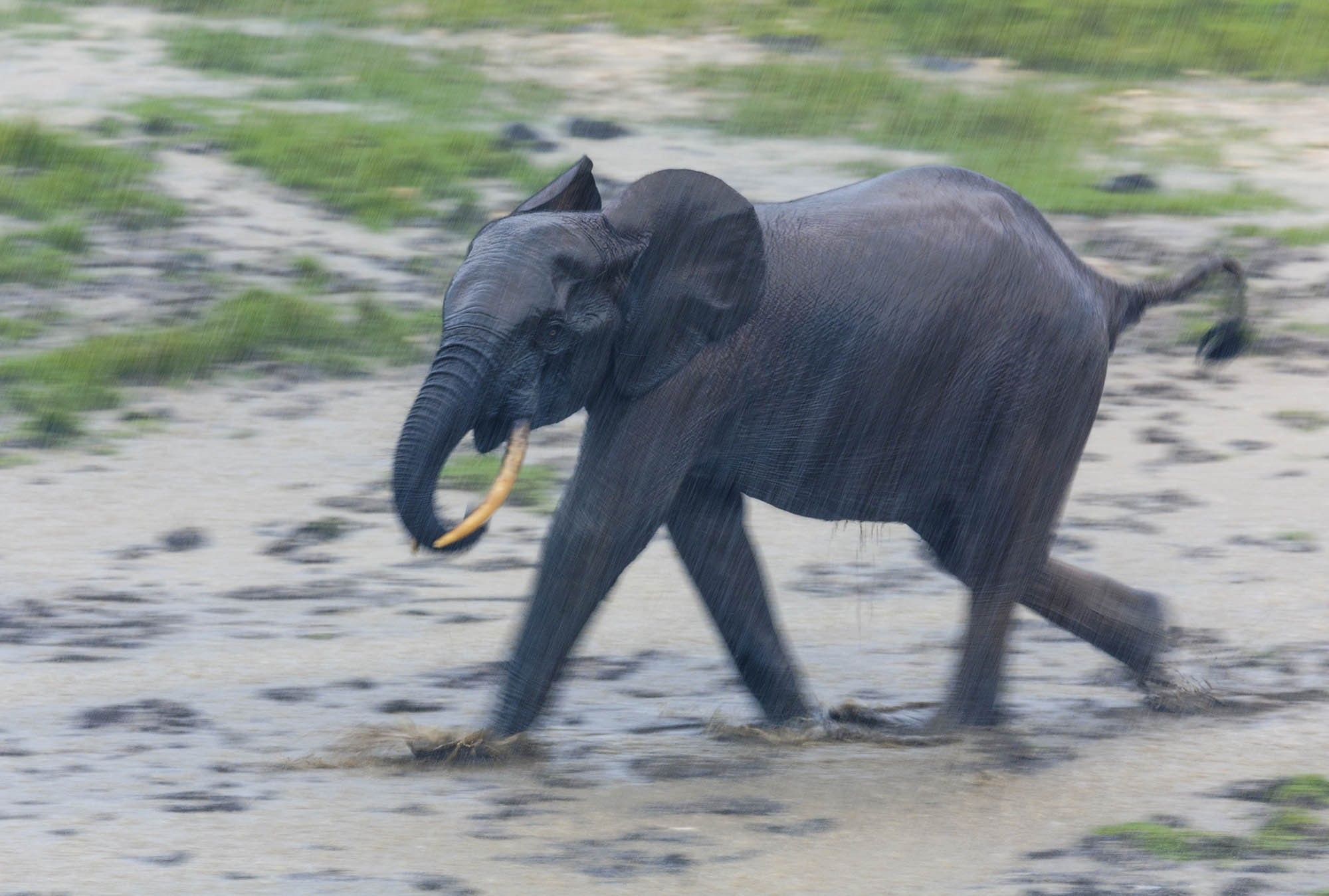











Congo Basin, Mystical Rainforest in Africa
Background
The Congo is actually a mystical, dark river that stretches through the middle of Africa. Stories and myths have shaped its name, but war, exploitation, and resource trade, made the countries and the Congo basin known. This photography & film expedition, in collaboration with the WWF Germany, took us to the Republic of Congo and to the Central African Republic. The Odzala Koloua National Park and the Dzangha Sangha National Park are protected areas for endangered species and wood mining is prohibited here. More about the conservation project: Elephant Listening Project, Cornell Lab
Scenery
WWF rangers and trackers guided us to see the lowland gorillas, forest elephants, forest buffalos, bongos, armadillos, and other rare species, in the almost impenetrable rainforest of the Congo. The forest elephants often gather in large clearings, also known as Bai’s, to absorb minerals from the ground. This gave us the unique opportunity to spot over 170 of these gray giants at once.
Equipment
The most important thing is to protect the equipment from rain and moisture. To be able to react quickly to the movements of the animals in the forest, I used a ‘Lens Packer’ from the photo bag company König, whilst hiking through the riverbeds. My chosen equipment for this bag was a Canon R5 with a 200-400mm f/4 lens attached. The rest of the equipment was transported by one of the trackers. This meant I was flexible and fast enough to be able to capture the forest elephants and, above all, my equipment was well protected from moisture.
Making of
Due to the heat and high humidity that prevail in the tropical rainforests, the photographic work was a challenge, to say the least. In addition, there were strenuous hikes to the best photo location to spot the wildlife, sometimes through knee-high waterways or by boat. Another difficulty were the countless mosquitoes, flies, and other little pests, and above all not to get these between your lens while swapping it.
Kongobecken, Mystische Regenwälder in Afrika
Hintergrund
Eigentlich ist der Kongo ein mystischer, dunkler Fluss, der sich durch die Mitte Afrikas erstreckt. Mythen und Geschichten haben den Namen geprägt. Aber dunkle Kapitel wie Krieg, Ausbeutung und Rohstoffhandel haben die Länder und das Einzugsgebiet des Kongo bekannt gemacht. Diese Foto & Film Expedition, in Zusammenarbeit mit dem WWF Deutschland, führte uns in die Republik Kongo und in die Zentralafrikanische Republik. Der Odzala Kokoua Nationalpark, sowie der Dzangha Sangha Nationalpark sind Schutzgebiete für bedrohte Arten und auch der Holzabbau ist dort verboten. Mehr zu dem Naturschutzprojekt:
Elephant Listening Project, Cornell Lab
Landschaftskulisse
Ranger und Fährtenleser des WWF führten uns zu den Flachlandgorillas, Waldelefanten, Waldbüffeln, Bongos, Gürteltieren und anderen seltenen Arten, in den fast undurchdringlichen Regenwald des Kongo. Gerade die Waldelefanten versammeln sich oft auf großen Lichtungen, auch Bai’s genannt, um Mineralien aus dem Boden aufzunehmen, was uns die einmalige Gelegenheit gab über 170 Exemplare dieser grauen Riesen auf einmal zu sehen.
Ausrüstung
Das wichtigste ist, das Equipment for Regen und Feuchtigkeit zu schützen. Um schnell auf die Bewegungen der Tiere im Wald reagieren zu können, nutze ich bei den Wanderungen durch die Flussläufe einen ‘Lens Packer’ der Firma König. Die Wahl der Ausrüstung fiel auf eine Canon R5 mit angesetztem 200-400mm f/4 L Objektiv. Den Rest der Ausrüstung wurde von einem der Fährtenleser transportiert. So konnte ich flexibel und vor allem schnell genug Fotos von Waldelefanten machen und meine Ausrüstung war bestens vor Nässe geschützt.
Hinter der Kamera
Durch die Hitze und hohe Luftfeuchtigkeit, die in den tropischen Regenwäldern herrschen, war die fotografische Arbeit schon eine Herausforderung. Hinzu kamen anstrengende Wanderungen zu den Fotoplätzen, teilweise durch Kniehohe Wasserwege oder auch mit dem Boot. Eine weitere Schwierigkeit waren die unzähligen Stechmücken, Fliegen und andere Plagegeister, und diese bei einem Objektivwechsel nicht mit vor die Linse zu bekommen.